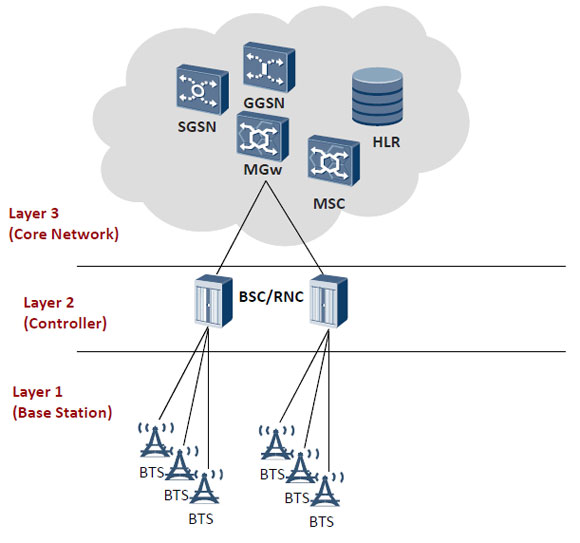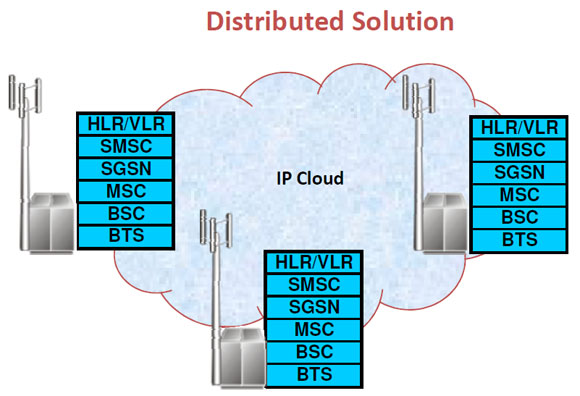The usage of technology to improve humanitarian action and make disaster preparedness and response more efficient has been increasing in the past number of years. In this blog we look at the Challenge Networks (CN), based in Australia, that have been designed to circumvent some of the roll-out challenges in remote locations such as the Pacific Island nations. The designs have a direct impact on how mobile networks for disaster response might look in the future.
Mobile network design and roll-outs in countries are typically based around some, or all, of the following key assumptions
- large population and high population density
- reliable, cheap and good quality backhaul via fibre and/or microwave
- multiple points of external voice/data interconnect
- low cost and high availability of electrical power
In many countries which have a contiguous nature and urban centres, these assumptions hold and thus using traditional mobile network architectures (which were designed with these criteria in mind) works fine. However, in many (especially developing) countries few, if any, of these assumptions hold. Some are made up of a large number of small islands spread across a vast region; made up of atolls and situated hundreds of kilometres from their neighbouring countries. As a consequence, traditional network solutions are simply impossible or much too expensive to build a traditional solid business case on. The only solution for backhaul and interconnect here is satellite and that makes service provision expensive. Furthermore, the expected Average Return per User (ARPU) from such developing countries tends to be low. An island nation such as Kiribati is a good example of where such commercial and technological challenges exist. Kiribati has 32 islands (mostly atolls) with a population of 100,000 spread over 3.5 million square kilometres; however the total land mass is only 811 square kilometres. In addition the average ground height above sea-level is only 6 metres.
To revisit the earlier assumptions and revise them in light of this nation:
- very low population and very low population density
- practically negligible ability to provide backhaul so expensive satellite backhaul required
- little availability for electrical power and it is expensive
Traditional mobile network schematic
Traditional mobile network architecture involves signalling all that is traversing the network core on each path. This is where the brains of the network reside via the HLR/VLR; text messages are handled via the SMSC and the switching is done via the MSC/SGSN. These nodes in the core must be connected to the radio layer via the backhaul network.
In locations where the assumptions made for traditional networks do not hold true, it is required that a new design is involved. This design developed by CN uses similar approaches to what is now common to cloud computing concepts. This results in the brains of the network moving from the core to the edge where each node on the radio layer is a self-contained node and so the mobile network becomes a mesh network with an IP connectivity cloud in the middle provided by a satellite mesh.
Distributed Mobile Network Schematic
From the point of view of a network roll-out business case, this solves a number of issues:
- No single point of failure
- Reduction in expensive satellite hops for calls
- Improved data/voice quality with massively reduced latency & jitter.
While this network design is clearly not optimal for every environment it is a very clever way to solve engineering problems presented by population distributions, geographies and economic factors.
From a Mobile for Development and Disaster Response point of view however, such network design presents exciting possibilities for the future. Generally speaking, once disasters hit; the main issues affecting the recovery of mobile networks are extended loss of traditional backhaul and loss of power, so the correlation to disaster response is clear:
- The reduced dependence on satellite between the core and the radio eases the path for connection of small remote communities.
- Remote locations or islands belonging to a larger country can be linked to the main core network using such extensions.
- The loss of a backhaul does not necessarily mean the loss of intra-cell or inter-regional mobile calls.
- Stand-alone networks can be established relatively quickly in disaster-zones to enable initial assessments and recovery efforts to be co-ordinated. Such rapid deployment networks can then be extended with low cost/high implementation speed transmission solutions which would not otherwise be used in a disaster response situation.
- Ability to provide data caching and even data storage at the BTS end of the network (rather than the traditional solution of at the centralised core) which further enables disaster response functionality.
Simon Lardner, Founder of Challenge Networks says ‘’any disaster response requires a portfolio of technology solutions and partnerships but what we have developed here for Kiribati can and should be used in other regions as part of that portfolio of technology solutions”.



